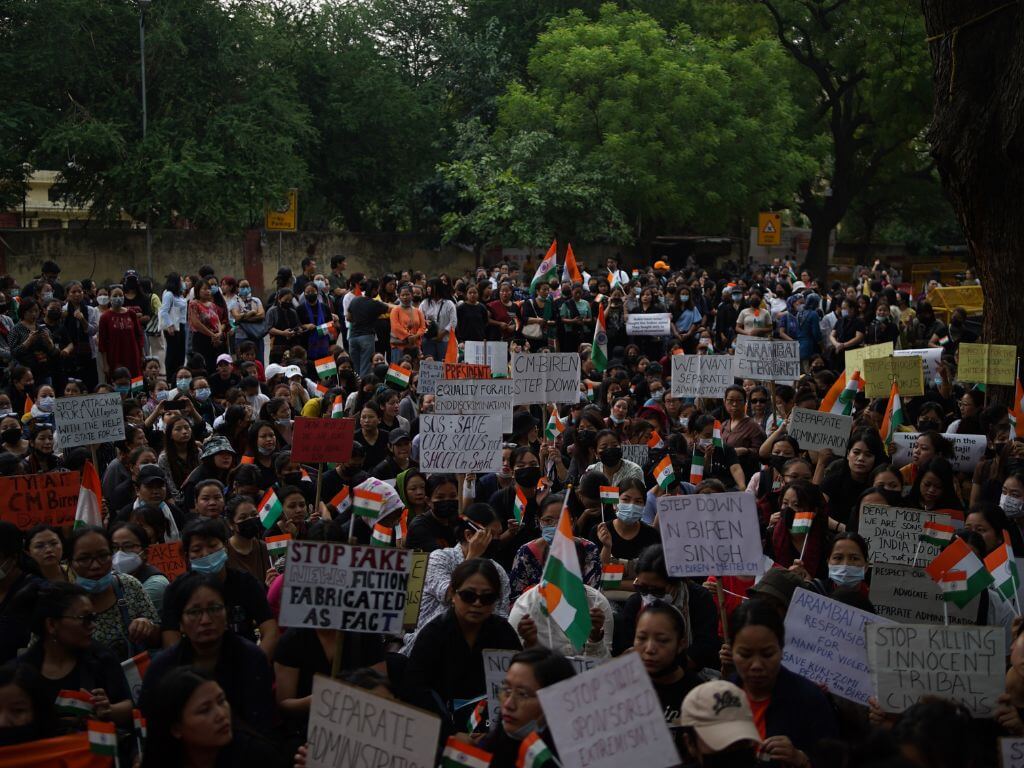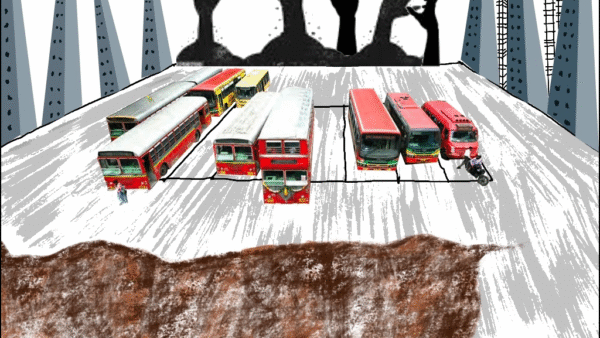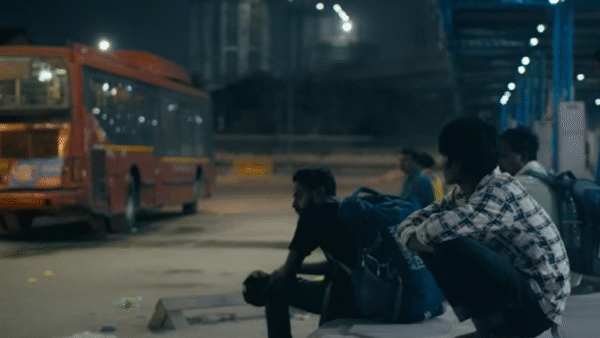Jantar Mantar in New Delhi was not meant to be a protest space. It became that over the years and is now synonymous with dozens of protests that India, and the rest of world, witnesses. The 18th century awe-inspiring observatory was a historical and tourist attraction in the national capital, but Jantar Mantar and the wide pavements around it have been home to a large number of protests and protesters in recent years. It’s no protest square in the classical sense but protesters pour in.
The long sit-in protest of women wrestlers including Olympian Sakshi Malik, who won India’s first medal in 2016 Rio Olympics, since January this year is only the latest one to grab the headlines. Taking up cudgels against Brij Bhushan Sharan Singh, chief of the Wrestling Federation of India and BJP Member of Parliament from Kaiserganj in Uttar Pradesh, Malik accompanied by Vinesh Phogat, Sangeeta Phogat and Bajrang Punia spoke up against the sexual harassment he allegedly perpetrated. The women wanted to be heard by those in power.
Unheard and dismissed for months, when they decided to march to the Parliament, the roads leading to and from Jantar Mantar were closed and tens of bright yellow barricades of the Delhi Police were strategically placed to block the route as well as access to the protest site. Photographers like Manisha Mondal found they had to negotiate and duck around to get to the protesters.
Jantar Mantar has become the protest square of Delhi, even India, not because it enables and supports protesters – in fact, it does not have easy or simple access to basic facilities such as restrooms and drinking water – but because the issues raised here draw the nation’s attention. Protesters have made it their ‘home’ for weeks and months, and somehow managed to make their issues visible to people and governments. Dissenters and agitators, individuals or groups, from any city or state and any caste or economic condition have found their way to Jantar Mantar in recent years – only because they can be heard.
Whether the protesters assembling at Jantar Mantar achieve their purpose or not depends on a number of factors prevalent on each occasion but when the space itself is barricaded and made out of bounds to protesters, it signals a foreboding.
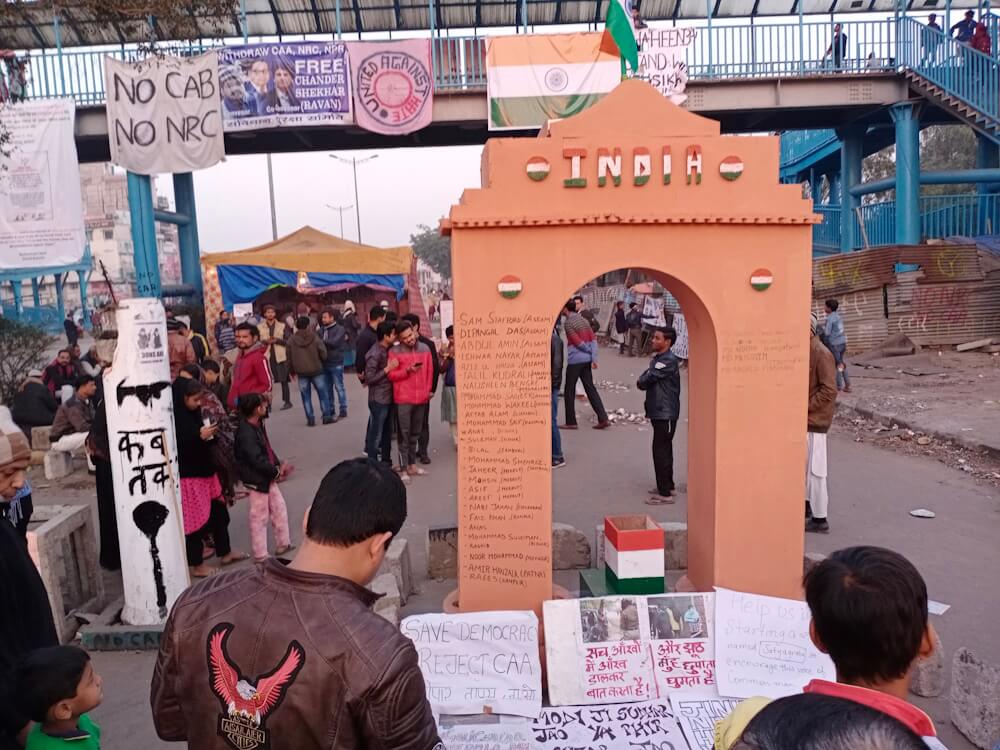
Photo: Wikimedia Commons
Before Jantar Mantar
Jantar Mantar came to be a protest site in 1993. There was no official declaration, yet the tree-lined boulevard connecting Tolstoy Road to Ashoka Road became that. Before that, protesters gathered at the Boat Club, an iconic space of resistance, with the view it offered of the arterial roads of Janpath and Rajpath, and the Parliament.
Rattled by agitations in the late 1980s, even as the Ram Janmabhoomi movement was raging, the then Congress government imposed a ban on gatherings at the Boat Club. Successive governments understood that protest venues had to be controlled and regulated to suit their ends. Jantar Mantar seemed ideal given that it had proximity to the Parliament and it was not large enough for an uncontrollably big crowd. Importantly, its location and topography meant that it had two main points of entry and exit which made it more conducive for crowd management than an open large space.
Soon, Jantar Mantar became the main dissent square for protesters from around the country. It has witnessed hundreds of protests including landmark political ones such as Anna Hazare’s hunger strike in 2011 to root out corruption and force the then government to bring in the Lokpal Bill. Later, it moved to the larger Ramlila Maidan and led to the formation of the Aam Aadmi Party. In 2012, following the heinous gang rape and death of 23-year-old “Nirbhaya” on a bus in Delhi, massive protests reverberated from India Gate to Rashtrapati Bhavan – an outpouring of people’s rage – which forced changes in the law to make rape punishable with the death penalty.
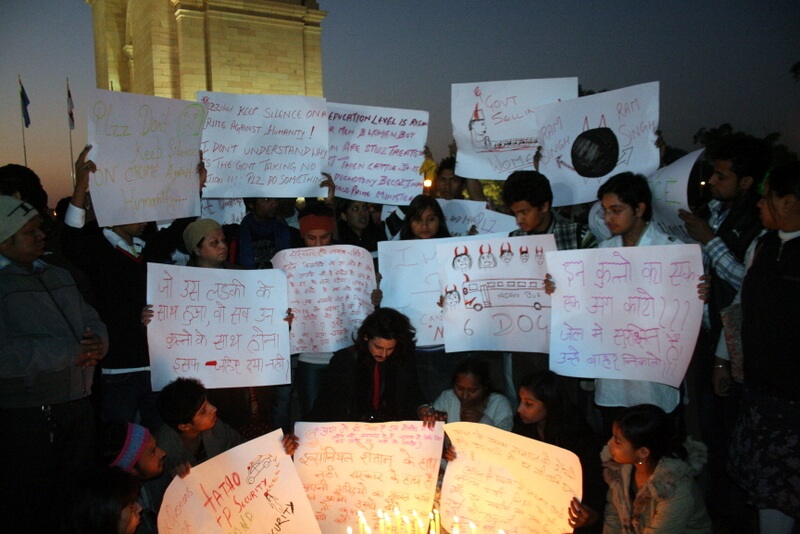
Photo: Wikimedia Commons
Farther away from power
When protests and agitations were disallowed at the Rajpath, Janpath and Boat Club, the issues and slogans had receded from the seat of power. Jantar Mantar, it seemed, was close by. However, in 2018, the National Green Tribunal directed the Delhi government – ironically of the AAP – to cease all protests in the Jantar Mantar area and designated the Ramlila Maidan, nearly four kilometres away, as the new place for sit-in protests. With protesters and their voices farther away, those in power can pretend to not hear them.
“The Constitution gives us the right to question everyone, wherever,” says Meena Kotwal, founder of Mooknayak, an online news channel and website focused on social justice for Dalits and other marginalised. She used to be part of many protests, she explains and has seen the space shrink; now, she believes it is important to document it all.
Protests have inspired social, legal and political change through ages. But for hundreds or thousands of people to gather, raise a collective voice with their demands, space becomes significant. If congregation is discouraged by law or court orders, as has been happening, collective action becomes difficult. When public spaces for protests are steadily decreasing or restricted, people take to the streets, often braving the police.
Delhi’s queer Pride Parade has been on its streets, as it usually is across cities. The parade, an annual festival to honour and celebrate lesbian, gay, bisexual, transgenders and their supporters, usually moves from Barakhamba Road to Tolstoy Marg and finally reaches Jantar Mantar. The first Pride Parade, in 2008, drew hundreds in Delhi calling for a repeal of Section 377 of the Indian Penal Code which criminalised homosexuality – it was read down by the Supreme Court in 2018 – and has since become an annual feature. The issue needed to be aired, participants in the Pride Parade wanted to be seen and heard; the street march was a better tactic than gathering at a designated spot.
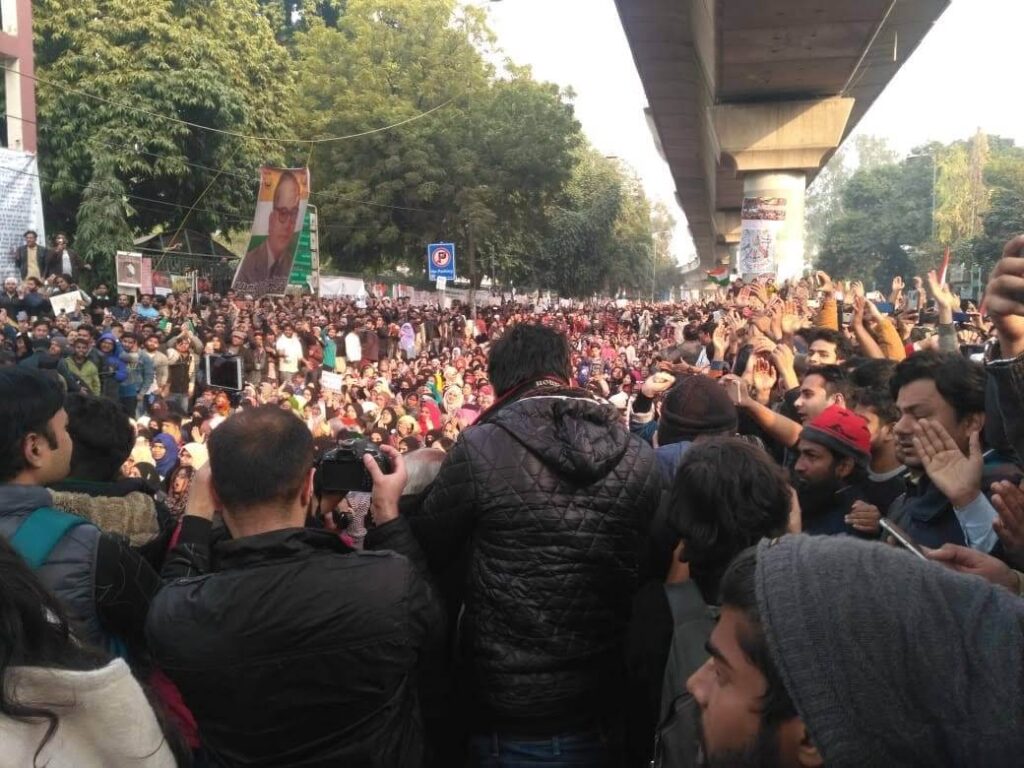
Photo: Bhumika Saraswati
Delhi’s streets
Streets as protest spaces is not a new idea but has gained traction as conventional protest sites become restricted. Delhi has seen several protests on its streets in recent years.
“From the beef ban to lynchings, I joined most protests during my college days,” says Simeen Anjum, social artist who participated in the anti-Citizenship Amendment Act (CAA) protests of 2019-20. She was then a student of Jamia Millia Islamia, where hundreds of policemen forced their way into the campus on December 15, 2019, and detained student protesters.
With Shaheen Bagh, the six-lane highway in Okhla in the south-eastern part of Delhi, the street itself turned into a site of protest. When women in the area, many of them Muslim wearing burqas, began their indefinite sit-in protest against the CAA in December 2019 demanding that the discriminatory citizenship law be scrapped, it looked like a regular neighbourhood protest. As ‘Shaheen Bagh’ strengthened with more protesters from around the country and expanded to take over more than a kilometre of the road, effectively disrupting traffic flow, it inspired similar ‘baghs’ in other cities, it sparked retributive action by governments and courts.
The trickle-down effect or ripple effect of Shaheen Bagh was felt across India as the protest site – or protest street turned site – made headlines everyday with feisty old women revelling in their new roles that even drew the international media to the location. This sparked anxieties in both the Delhi as well as the Union governments, cases were filed against protesters, petitions were made to courts to free the area. The protesters were far away from power, from the Parliament, but their voices had risen to an unmistakable crescendo reaching those in power.
Shaheen Bagh remains a lodestar in recent protests. The cityscape of Delhi by the protest sites of Jamia and Shaheen Bagh is not just limited to street art but the rerouting and diversion of traffic, creation of temporary structures like classrooms and libraries outside the institution and on the roads.[1]
One of the Shaheen Bagh-inspired protest sites was near Inderlok Metro station foot overbridge. Fluttering Tricolours, as in Shaheen Bagh, the protesters here stayed clear of the main road and organised their action in ways that did not disrupt traffic. Nearly 200 women sat in protest against the CAA, resounding the area with their slogans and speeches.
Temporal site and politics
The roads and street corners which became protest sites, on the spur of the moment responding to the tense ferment of the time, could be called temporal protest sites.
As Simeen Anjum, protester, says, “Wherever we stood became our protest site – outside our homes, our streets, our colleges, even parks…This only happens when our personal lives are affected and we want to be seen and acknowledged. It’s emotional, it stems out of frustration. Designated sites have become echo chambers in Delhi…because no one listens there.”
The whole point of a protest is to bother those who are comfortable in power, if it isn’t happening it’s a failed effort. Protesters are sensing, if not speaking about, the spatial politics involved in blocking, barricading and restricting sites, and pushing protesters into corners of the city. “Designated protest sites are an oxymoron…they are echo chambers,” says Safoora Zargar, researcher, protester in the anti-CAA agitation, arrested under the Unlawful Activities Prevention Act (UAPA).
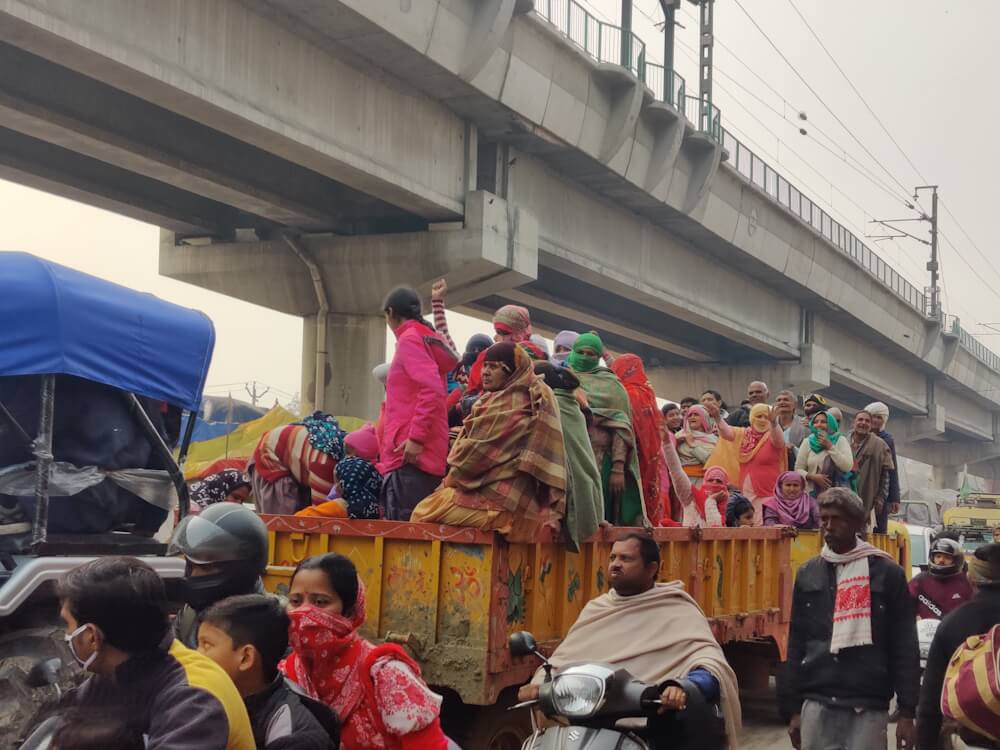
Photo: Bhumika Saraswati
In 2020-21, borders of Delhi at Singhu, Tikri and Ghazipur were turned into protest sites by farmers agitating against the Farm Bills moved by the Narendra Modi government. Thousands of farmers, largely from Punjab and Haryana, gathered at these sites in tents, slept in tractors, and put up langars for food. When they could not be reined in, the administration dug up roads and put moats to hold them back. It did not work. The sites became so popular that farmers from the rest of the country came there to join the protest.
“A protest site comes into being by the number of people, time period, when the protest is happening, weather conditions, and the availability of electricity and water,” explains Harinder Happy, PhD scholar from Jawaharlal Nehru University and associated with the Sanyukt Kisan Morcha.
A common form of protest policing in cities over the time is requiring protesters to obtain permits in advance. Research shows the police disproportionately flag protest applications by religious minorities for threat assessment. A postcolonial police force, which privileges preservation of order over its other functions, regularly curtails the democratic freedom to protest.[2]
The protest can be clamped down too by cutting off access to electricity and water, shutting down the internet, and slapping people with charges. This happens regularly at Jantar Mantar; protesters find every day a struggle, especially women who do not even have clean restrooms.
In various instances, protesters have had to agitate for drinking water at Jantar Mantar; the difficulties signal that the poor are not welcome in the national capital to voice their concerns, according to Raj Shekhar, coordinator for the Right to Food Campaign, in his reflection.[3] The government, he argues, promotes India as the “mother of democracy” while shutting down avenues for people to express themselves freely.
The India Gate and the Rajpath area, the largest public spaces in the national capital, remain restricted as public spaces for protest. The Rajpath, the three-kilometre-long stretch, though a colonial space, was once the heart of citizens’ voices, a metaphor for India’s soul but is no longer that.[4] The new redevelopment of the Central Vista restricts movement. Hundreds of barricades in front of the India Gate leave little possibility to gather and protest.
Well-known journalist Ravish Kumar told Question of Cities that even Jantar Mantar is not a people’s space any more. “It is not everyone’s space, it has now become a ‘risk reduced space’ with barricades at multiple spots,” he says, alluding to the lower risk for governments from the protests there due to the control it wields. The barricades, of course, literally and figuratively signify reduced democratic space. “Jantar Mantar as a protest site has shrunk,” laments Kumar.
Yet, it still draws people from all over. After the protesting wrestlers were forcibly cleared, hundreds of tribal women (mostly Kuki) from Imphal Valley, Manipur, staged a protest against the Meitei-inflicted violence in their home state. In the national capital, increasingly left with fewer protest spaces, Jantar Mantar is far from an ideal site but still holds value for people who want to draw attention to their cause.
Bhumika Saraswati, based in New Delhi, is an independent journalist, filmmaker and photographer. Her latest documentary film ‘Sex Worker and Their Children’ won the Human Rights Press Award 2023. She is also the recipient of UNFPA Laadli Media Awards 2022 for gender-sensitive reporting.
Cover photo: Jantar Mantar/ Bhumika Saraswati

